Upper limb nerve glides are exercises designed to improve nerve mobility and reduce discomfort in the arms and hands. They are essential for rehabilitation, helping restore function and alleviate symptoms in conditions like carpal tunnel syndrome.
1.1 What Are Nerve Glides?
Nerve glides are specialized exercises designed to improve the mobility of nerves in the upper limbs. These exercises involve gentle, controlled movements that allow nerves to slide or glide within their surrounding tissues. The median, radial, and ulnar nerves, which supply sensation and motor function to the arms and hands, are the primary focus of these exercises. Nerve glides aim to restore the normal gliding function of nerves, which can become restricted due to injury, inflammation, or surgery. By encouraging proper nerve movement, these exercises help reduce tension, prevent scarring, and improve overall nerve function. They are often used in rehabilitation programs to address conditions like carpal tunnel syndrome, nerve entrapment, or post-surgical recovery. Regular practice of nerve glides can enhance joint mobility and alleviate symptoms such as numbness, tingling, or pain in the upper extremities.

1.2 Purpose of Upper Limb Nerve Glides
The primary purpose of upper limb nerve glides is to restore the natural mobility and function of nerves in the arms and hands. These exercises aim to reduce nerve tension, prevent scar tissue formation, and improve circulation. By promoting proper nerve movement, they help alleviate symptoms such as numbness, tingling, and pain, which are common in conditions like carpal tunnel syndrome or nerve entrapment. Nerve glides also play a crucial role in post-surgical or injury recovery by enhancing nerve flexibility and strength. Additionally, they are used to manage chronic conditions by maintaining nerve health and preventing further damage. Overall, the goal is to ensure nerves function optimally, allowing for improved joint movement, reduced discomfort, and enhanced overall upper limb performance.
Anatomy of the Upper Limb Nerves
The median, radial, and ulnar nerves are the primary nerves supplying the upper limb, controlling movement and sensation. Each nerve has a distinct pathway and function, enabling precise hand and arm coordination.

2.1 Median Nerve
The median nerve originates from the brachial plexus and runs down the arm, passing through the carpal tunnel to supply the thumb, index, and middle fingers. It controls flexion of the wrist and fingers, as well as providing sensation to the palm and fingertips. The median nerve is prone to compression, particularly in the wrist, leading to conditions like carpal tunnel syndrome. Nerve gliding exercises are often used to restore its mobility and reduce tension. Proper functioning of the median nerve is crucial for fine motor activities and hand dexterity; Damage or inflammation can cause numbness, tingling, and weakness, emphasizing the importance of targeted exercises for rehabilitation and prevention.
2.2 Radial Nerve
The radial nerve is one of the three main nerves of the upper limb, originating from the brachial plexus and running down the back of the arm. It wraps around the humerus and extends into the forearm, where it splits into sensory and motor branches. The radial nerve is responsible for wrist and finger extension, as well as providing sensation to the back of the hand and fingers. It plays a crucial role in grip strength and dexterity. Nerve gliding exercises for the radial nerve focus on maintaining its mobility, especially after injuries or surgeries that may cause scarring or entrapment. Proper nerve function is essential for activities requiring hand and wrist movement, making it a key focus in rehabilitation programs to prevent conditions like radial tunnel syndrome.
2.3 Ulnar Nerve
The ulnar nerve is the third major nerve of the upper limb, playing a vital role in hand and forearm function. It originates from the brachial plexus and travels down the arm, passing behind the medial epicondyle at the elbow before entering the forearm. The ulnar nerve innervates muscles responsible for finger movement, particularly the intrinsic muscles of the hand, and provides sensation to the little and ring fingers. It is prone to conditions like cubital tunnel syndrome, where it can become compressed at the elbow. Nerve gliding exercises for the ulnar nerve focus on maintaining its mobility, especially during elbow flexion and wrist movement. Proper function of the ulnar nerve is essential for fine motor activities, such as writing or gripping objects, making it a key target in rehabilitation programs aimed at restoring hand dexterity and reducing discomfort.
Benefits of Nerve Glide Exercises
Nerve glide exercises improve nerve mobility, reduce tension, and enhance joint movement, promoting better circulation and preventing nerve entrapment. They are effective for rehabilitation and managing chronic nerve-related discomfort.
3.1 Improving Nerve Mobility
Nerve glide exercises are specifically designed to enhance the natural gliding ability of nerves, such as the median, radial, and ulnar nerves in the upper limb. By gently moving the nerves through controlled movements, these exercises help restore their elasticity and sliding capacity. Improved nerve mobility reduces the risk of nerve entrapment and associated symptoms like numbness and tingling. Regular practice ensures that nerves can move freely within their surrounding tissues, preventing adhesions and scarring that may develop after injury or surgery. This restoration of mobility is crucial for maintaining proper nerve function and overall limb health, making it an essential component of rehabilitation programs for conditions such as carpal tunnel syndrome and other nerve-related disorders.
3.2 Reducing Nerve Tension
Nerve glide exercises play a crucial role in reducing nerve tension by gently mobilizing the nerves and surrounding tissues. When nerves become compressed or inflamed, they can cause discomfort, numbness, or tingling in the upper limb. These exercises help alleviate such symptoms by promoting the normal sliding and stretching of nerves, thereby reducing tightness and pressure. By improving circulation and relieving mechanical stress on the nerves, nerve gliding can prevent further inflammation and irritation. Regular practice ensures that nerves remain flexible and less prone to entrapment, which is particularly beneficial for individuals recovering from injuries or surgery. This approach not only enhances comfort but also supports long-term nerve health and function, making it an integral part of rehabilitation programs for nerve-related conditions. Consistency in performing these exercises is key to achieving sustained relief from nerve tension.
3.3 Enhancing Joint Movement
Nerve glide exercises contribute significantly to improving joint mobility by ensuring that nerves move freely alongside tendons and muscles during limb movements. When nerves are unrestricted, joints can function more effectively, allowing for a greater range of motion and reducing stiffness. By enhancing nerve gliding, these exercises help maintain the integrity of the neuromuscular system, which is essential for coordinated and pain-free joint movement. Improved circulation and reduced nerve tension also support healthier joints, making physical activities more comfortable and enjoyable. Regular practice of nerve gliding exercises can prevent joint limitations caused by nerve entrapment or inflammation, ensuring optimal mobility and functionality in the upper limbs. This makes them an invaluable component of rehabilitation and preventive care for individuals with joint or nerve-related conditions. Consistent practice promotes sustained joint health and overall upper limb function.
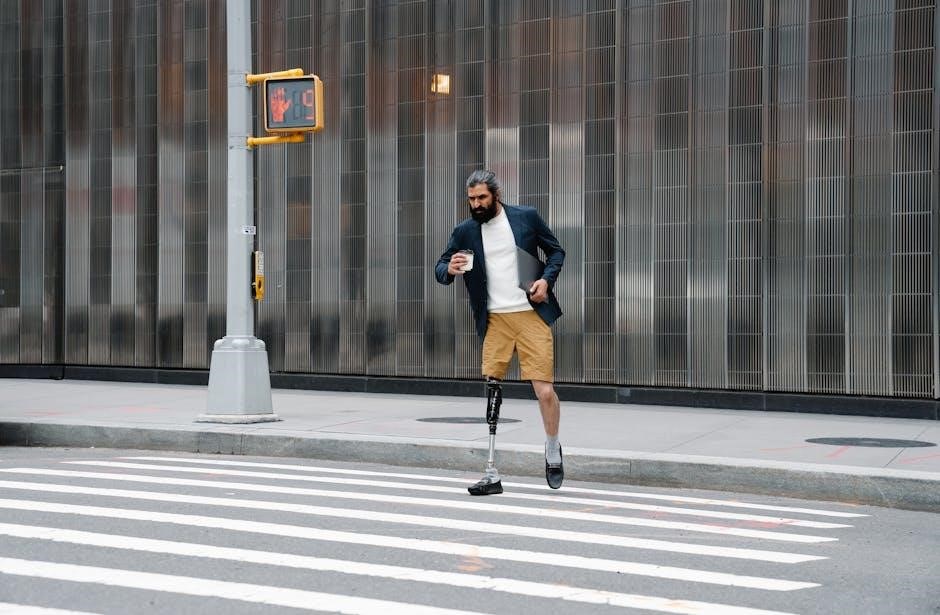
Importance of Nerve Gliding in Rehabilitation
Nerve gliding exercises are crucial in rehabilitation as they enhance recovery by improving nerve mobility, reducing tension, and preventing entrapment. They are essential for restoring function and managing chronic conditions effectively. Regular practice promotes faster healing and reduces complications, making them a cornerstone of post-surgical and injury rehabilitation programs for upper limb health; They ensure nerves function optimally, supporting overall recovery and long-term mobility. Consistent use of these exercises helps patients regain strength and flexibility, improving their quality of life. Nerve gliding is a vital tool for achieving sustainable recovery and maintaining nerve health. Proper technique ensures safety and effectiveness, avoiding further injury; They are tailored to individual needs, offering personalized care. Through targeted movements, nerve gliding addresses specific injuries, enhancing the rehabilitation process. This approach minimizes the risk of recurring issues, fostering lasting recovery. Nerve gliding is a fundamental component of modern rehabilitative care.
4.1 Post-Surgical Recovery
Nerve gliding exercises play a vital role in post-surgical recovery, particularly for patients undergoing procedures involving the upper limb nerves. These exercises help restore nerve mobility, reduce scar tissue formation, and prevent nerve entrapment, which can hinder recovery. By gently encouraging the nerves to glide naturally, patients can avoid complications such as numbness, tingling, or limited range of motion. Post-surgery, nerve gliding is often prescribed to improve circulation, maintain nerve flexibility, and promote faster healing. Regular practice ensures that nerves adapt to their environment, reducing the risk of chronic pain or dysfunction. These exercises are typically performed under the guidance of a clinician to ensure proper technique and safety. Consistent adherence to a nerve gliding program can significantly enhance recovery outcomes, enabling patients to regain strength and functionality in their upper limbs more effectively. Nerve gliding is a cornerstone of rehabilitation for surgical patients, fostering optimal recovery and long-term mobility.
4.2 Managing Chronic Conditions
Nerve gliding exercises are instrumental in managing chronic conditions affecting the upper limbs, such as carpal tunnel syndrome or cubital tunnel syndrome. These exercises help alleviate symptoms like numbness, tingling, and pain by improving nerve mobility and reducing tension. By promoting normal nerve movement, they prevent further entrapment and scar tissue formation, which often exacerbate chronic conditions. Regular practice strengthens the connection between nerves and surrounding tissues, enhancing overall limb functionality. Nerve gliding is particularly beneficial for long-term management, as it addresses the root cause of discomfort rather than just masking symptoms. Patients with chronic nerve-related issues often find significant relief through consistent and controlled exercise routines, reducing the need for invasive treatments. These exercises are a cornerstone in conservative management strategies, offering a non-invasive approach to improving quality of life and maintaining upper limb health.
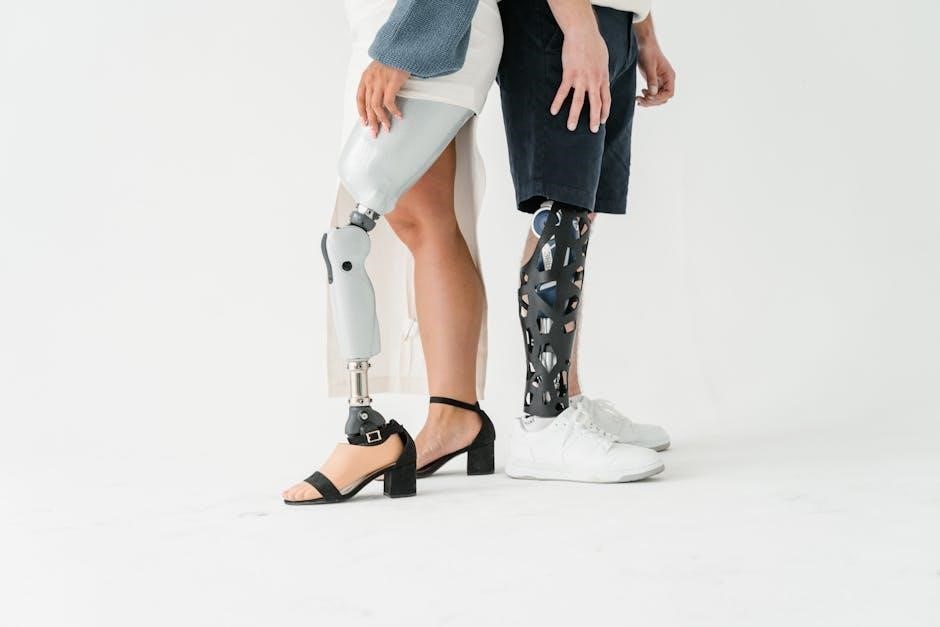
Exercises for Upper Limb Nerve Glides
Exercises target the median, radial, and ulnar nerves, promoting gentle gliding to enhance mobility. Perform 10 repetitions of each exercise, 3 times daily, focusing on controlled, pain-free movements to avoid discomfort.
5.1 Median Nerve Glide Exercises
Median nerve glide exercises are designed to encourage gentle movement and sliding of the median nerve, improving mobility and reducing tension. These exercises should be performed without pain but may cause mild stretching or temporary symptoms like tingling. Start with your arm extended, palm down, and slowly tilt your head to the opposite side while extending your wrist and fingers. Next, bend your elbow, bringing your hand toward your shoulder, and gently tilt your head again. Repeat this sequence 10 times, 3 times daily. If pain worsens or persists, stop immediately and consult a healthcare professional. Proper technique is crucial to avoid exacerbating nerve irritation and ensure effective rehabilitation.

5.2 Radial Nerve Glide Exercises
Radial nerve glide exercises focus on improving the mobility of the radial nerve, which runs from the neck to the hand. To perform these exercises, start by depressing your shoulder and internally rotating it. Next, flex your wrist and tilt your head to the same side as the affected arm. Slowly extend your arm backward while maintaining wrist flexion. The further you extend the arm, the more challenging the exercise becomes; Perform 10 repetitions, 3 times daily, to promote nerve gliding. Avoid sharp pain; mild stretching or tingling is normal but should subside quickly. If symptoms worsen, stop and consult a healthcare professional. These exercises are particularly beneficial for individuals recovering from radial nerve injuries or surgery, as they help restore normal nerve function and reduce tension.
5.3 Ulnar Nerve Glide Exercises
Ulnar nerve glide exercises are designed to enhance the mobility of the ulnar nerve, which runs from the neck down to the hand, controlling movement and sensation in the ring and little fingers. To perform these exercises, start by extending your affected arm in front of you at shoulder height, with your wrist and fingers bent toward your body. Slowly straighten your fingers and extend your wrist while bending your elbow to bring your hand toward your shoulder. Repeat this sequence 10 times, 3 times daily. These exercises help reduce tension and improve nerve gliding, particularly for individuals with ulnar nerve entrapment or post-surgical recovery. Avoid sharp pain; mild stretching is normal. If symptoms worsen, stop and consult a healthcare professional to ensure proper progression and safety.
Safety and Precautions
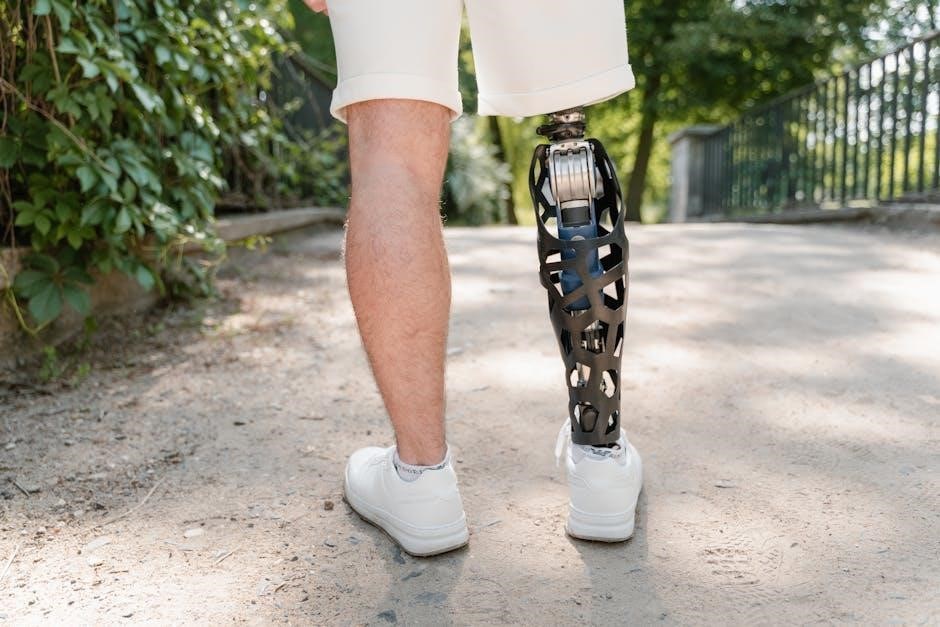
Nerve glide exercises must be performed slowly and controlled to avoid exacerbating symptoms. Stop immediately if pain occurs and consult a healthcare professional to ensure safe progression and effectiveness.
6.1 Contraindications
Nerve glide exercises are not suitable for everyone. They should be avoided in cases of acute nerve injuries, severe inflammation, or immediately after surgery without medical clearance. Individuals with unstable nerve conditions or those experiencing severe pain during exercises should discontinue them. Additionally, people with certain neurological disorders or those whose symptoms worsen with movement should consult a healthcare professional before starting. It is crucial to ensure that the exercises are performed correctly and safely to prevent further nerve damage or discomfort.
6.2 When to Stop Exercises
Nerve glide exercises should be stopped immediately if they cause increased pain, numbness, tingling, or weakness. If symptoms worsen or new symptoms develop, discontinue the exercises and consult a healthcare provider. Exercises should also be paused if they trigger sharp or radiating pain, which may indicate nerve irritation or injury. Additionally, individuals should stop if they experience dizziness, fainting, or severe discomfort during or after performing the exercises. It is essential to prioritize nerve health and avoid exacerbating any underlying conditions. If unsure about continuing, seeking professional advice is recommended to ensure safety and effectiveness of the exercises.
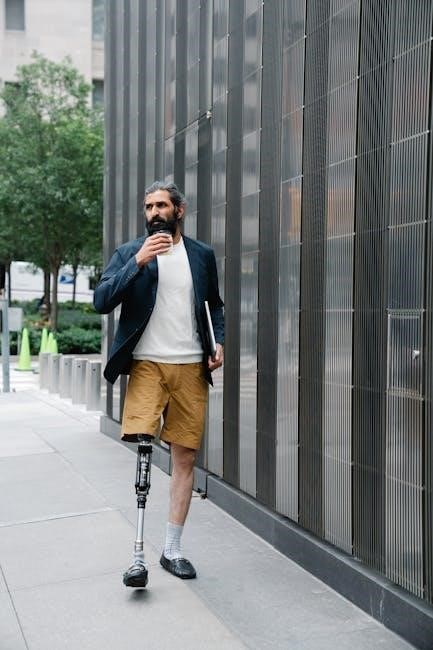
Case Studies and Research
Case studies demonstrate the effectiveness of nerve glides in improving mobility and reducing symptoms. Research highlights their role in rehabilitation and recovery from nerve-related injuries, offering measurable benefits for patients.
7.1 Median Nerve Glide Case Study
A study published in the Journal of Orthopaedic Research (2007) demonstrated the effectiveness of median nerve glide exercises in treating carpal tunnel syndrome. A 45-year-old female patient experienced numbness, tingling, and weakened grip strength due to prolonged computer use. After performing a structured median nerve glide program, including wrist extensions, forearm stretches, and nerve mobilization exercises, her symptoms significantly improved within six weeks. The exercises focused on restoring normal nerve mobility and reducing tension. The study highlighted the importance of gentle, controlled movements to avoid exacerbating symptoms. This case underscores the value of nerve glides in rehabilitation, offering a non-invasive approach to managing nerve-related conditions and improving functional outcomes for patients.
7.2 Radial Nerve Glide Case Study
A case study involving a 38-year-old male with radial nerve injury from a fall demonstrated significant improvement through targeted radial nerve glide exercises. The patient experienced weakness in wrist extension and difficulty gripping objects. The rehabilitation program included exercises such as shoulder depression, internal rotation, wrist flexion, and arm extension, performed 10 repetitions, 3 times daily. Initially, the exercises caused mild discomfort, but symptoms gradually subsided. After 8 weeks, the patient regained near-normal wrist function and grip strength. This case highlights the effectiveness of radial nerve glides in restoring nerve mobility and functional ability, particularly in post-traumatic rehabilitation. The structured approach emphasized controlled movements to avoid exacerbating symptoms, showcasing the importance of precise technique in nerve glide therapy.
Upper limb nerve glides are a vital tool in rehabilitation, improving nerve mobility, reducing tension, and enhancing joint movement. Regular practice promotes recovery and long-term functional improvement for patients.

8.1 Summary of Key Points
Upper limb nerve glides are specialized exercises that enhance nerve mobility, reduce tension, and improve joint movement. They are particularly beneficial for conditions like carpal tunnel syndrome and post-surgical recovery. By targeting the median, radial, and ulnar nerves, these exercises promote circulation, alleviate symptoms, and restore functional movement. Regular practice, when performed correctly, can significantly improve long-term recovery and reduce discomfort. Proper technique is essential to avoid exacerbating symptoms, emphasizing the importance of guided practice. Overall, nerve glides are a cornerstone of rehabilitation, offering a non-invasive approach to managing nerve-related issues and enhancing overall upper limb function.
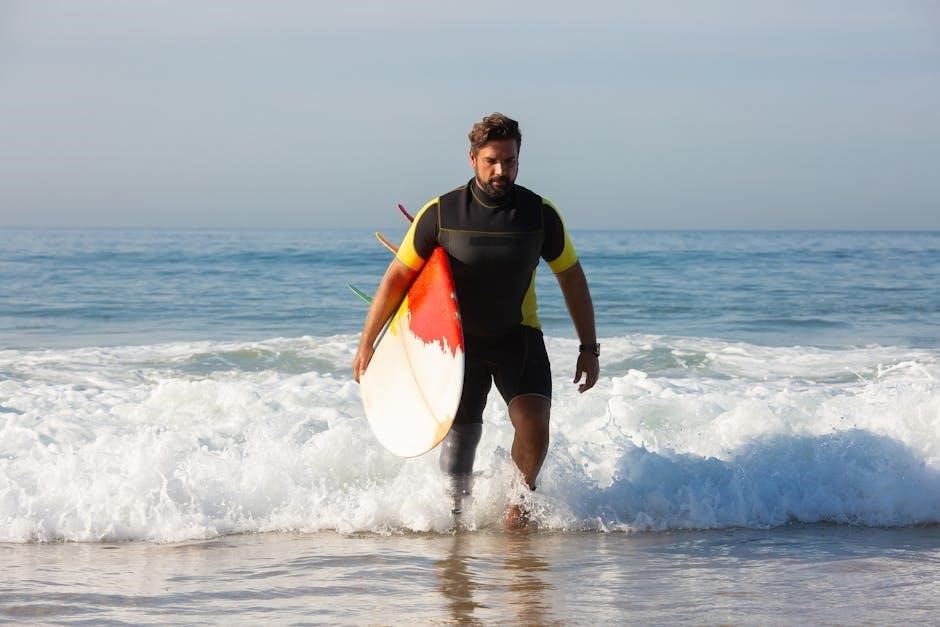
8.2 Future Directions in Nerve Glide Therapy
Future advancements in nerve glide therapy are expected to focus on refining exercise techniques and integrating technology for better outcomes. Research into the long-term efficacy of specific exercises could lead to more personalized programs, improving recovery rates. Innovations in wearable devices and apps may enhance adherence and provide real-time feedback for patients. Additionally, exploring nerve gliding in conjunction with other therapies, such as electrical stimulation or manual therapy, could broaden its applications. There is also potential for expanded use in preventive care, reducing the risk of nerve-related conditions in high-risk populations. By advancing both the science and accessibility of nerve glide therapy, healthcare providers can offer more effective and tailored solutions for patients with upper limb nerve injuries or conditions.